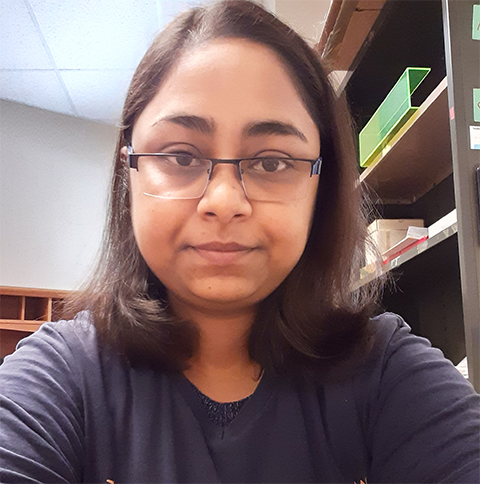
A warm city of warm hearts
On Veteran's Day 2022, soon after moving to San Antonio from Ohio to start my new job at the University of Texas Health Science Center, I was enjoying the relatively warmer weather, whereas most people around me were bundled up in heavy clothes. Having quickly learned that the whole city was well connected by public transportation, I was riding a bus when a septuagenarian offered me a big jacket “to beat the cold weather.” I explained that I had just traveled from a cooler place, but such an offer of help touched my heart.

A city is the collective impressions of its people, and I have found San Antonio to be very diverse and vibrant as well as welcoming and helpful. The weather is warm throughout the year, especially in July and August, with just a dash of coolness from December to February. Despite the heat, the city bubbles with energy and weekends are packed with colorful social events such as a special “Fiesta” every April to commemorate the valor of heroes of the Battle of the Alamo.
I work at the structural biology core of UTHSCSA. I prepare purified proteins in bulk amounts from different sources and put them into pipelines for downstream processes. Researchers subject each protein to structural studies by X-ray crystallography, nuclear magnetic resonance or cryo-electron microscopy to assess its function under normal physiological state and determine why it may become the causative agent of a disease or use it to find potential drug candidates to alleviate the disease.
It won’t be an exaggeration to mention that health science–related research is one of the main themes of research all across Texas. In addition to UTHSCSA, major research centers in San Antonio include the Texas Biomedical Research Institute, the Southwest Research Institute and the University of Texas at San Antonio. UT San Antonio conducts a wide variety of diverse research activities, whereas the rest of the centers focus on exploring the underlying causes of diseases and measures to give people a better life by developing more effective medicines.
Submit an abstract
Discover BMB, the annual meeting of the American Society for Biochemistry and Molecular Biology, will be held March 23–26 in San Antonio. Abstracts for poster presentations and spotlight talks will be accepted through Nov. 30. See the poster categories and spotlight talk themes.
Enjoy reading ASBMB Today?
Become a member to receive the print edition four times a year and the digital edition monthly.
Learn moreGet the latest from ASBMB Today
Enter your email address, and we’ll send you a weekly email with recent articles, interviews and more.
Latest in People
People highlights or most popular articles

McKnight wins Lasker Award
He was honored at a gala in September and received a $250,000 honorarium.

Building a stronger future for research funding
Hear from Eric Gascho of the Coalition for Health Funding about federal public health investments, the value of collaboration and how scientists can help shape the future of research funding.

Fueling healthier aging, connecting metabolism stress and time
Biochemist Melanie McReynolds investigates how metabolism and stress shape the aging process. Her research on NAD+, a molecule central to cellular energy, reveals how maintaining its balance could promote healthier, longer lives.

Mapping proteins, one side chain at a time
Roland Dunbrack Jr. will receive the ASBMB DeLano Award for Computational Biosciences at the ASBMB Annual Meeting, March 7–10, just outside of Washington, D.C.

2026 voter guide
Learn about the candidates running for Treasurer-elect, Councilor and Nominating Committee.

Meet the editor-in-chief of ASBMB’s new journal, IBMB
Benjamin Garcia will head ASBMB’s new journal, Insights in Biochemistry and Molecular Biology, which will launch in early 2026.

